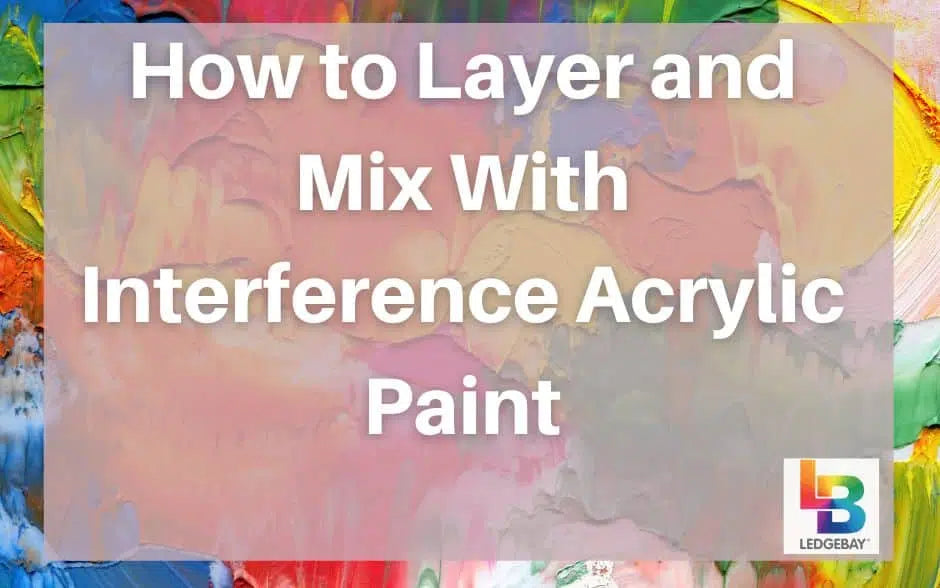Art is good for you. Research shows that looking at art has positive correlations with both physical and mental benefits. From overallbetter health to increasedcreativity, regularly viewing wall art is one easy way in which we can enrich our lives.
So it seems a shame that more people don’t take advantage of the benefits ofdisplaying art in their homes.
Beyond the tangiblehealth benefits, addingart to our interior design schemes is an excellent way to make a living space feel like it is truly our own. And when it is included, it is too often treated as an afterthought.
So rather than just relegating wall art to the sidelines, here are our reasons why you should consider making it a priority.
Wall Art Creates an Instant Focal Point
[amazon box="B09YLCBL5W"]
If you prominently display a strikingwork of art , then you can count on it being the first thing that someone will notice upon entering. Which is exactly the effect that you want to achieve.
One of the key principles of interior design iscreating and effectively utilizing focal points. A focal point, as the name would imply, is an area that demands attention and dominates the surrounding space. Basically, if you thought of your room like a movie, then the focal point is the movie star who gets top billing.
It should be easy to see whyan art piece is a natural fit for this role. Traditionally, you would position the artwork in such a way that it complements whatever the purpose of the room is.
For example, in aliving room with a fireplace, you would hang a painting just above the mantle. Or in the master suite, you would do the same over the bed.
Alternatively, you could create what is called agallery wall in an otherwise underutilized space. Think of a drab hallway or a bland dining area. Designating a prominent wall as a display area gives the viewer something to focus on and makes space feel more alive.
[amazon box="B08Q8SWYHP"]
It Can Set the Color Palette for the Whole Room
Choosing the color palette is one of the most important and most intimidating design choices that you will have to make. Who hasn’t gotten to the hardware store only to find a seemingly endless wall of paint chips waiting for them? The task of narrowing down the choices to just a few selections is so daunting that many people just default to old, predictable eggshell.
Fortunately, selecting a piece of wall art early on can help make that decision a lot easier on you. In using a piece of art as the focal point of a room, you are essentially setting the tone for the space, which will help determine the color scheme.
Once you have selected a piece of art for that room, single out two or three different shades that you would like to use in decorating the rest of the room. From these select a dominant color, along with a couple of extras that you can use as accent colors.
And that’s it, now you have an approximate color scheme to work with. You’ll still have to do the work of balancing your dominate color with supplementary accents, but the hard work of making that first decision will be done.
Wall Art Can Be a Personality Statement
[amazon box="B07KD6VRK3"]They say that beauty is in the eye of the beholder. If that is the case, then showcasing what you find to be beautiful can serve as a statement about who you are.
For starters, the mere act of featuring unique artworks prominently already sets you apart. Not everyone thinks of artwork as a significant priority, so committing to it shows a certain level of taste and vision. Particularly if you are the artist behind the work.
But beyond that, the specific art that you choose to display can say a lot about your personality, tastes, and even values. After all, there is only so much that a couch or a coffee table can say about their owner. And unless you have some particularly nosey acquaintances, most of your guests won’t take more than a cursory glance over a prominently placed bookcase.
[amazon box="B07P8RFHGR"]
But art is different. By its very nature, it demands to be seen and acknowledged.
Further, by choosing a piece that resonates with you, you can then use it to inform the rest of the furnishings in the room. As with the color palette, in using art as the foundation of your design, you will pick out other pieces that compliment it. So if that art indicates you and your tastes, then matching furnishings will be as well.
The result is a design statement that feels much more genuinely “you” than any prepackaged furnishing set ever could.
[amazon box="B00PC5DRPS"]
It Allows You to Showcase Your Creativity
What are the standard components of a living room? On average, probably a couch, a coffee table, a loveseat, and an entertainment center. And maybe a fireplace if one came with the home.
It is a serviceable setup, but not a very imaginative one. Even if you invest in all top quality furnishings, your living space will still be the same as anyone else’s.
So if you value your individuality, then the value of using art in your decor cannot be understated.
It allows you to experiment with the flow of the room. We mentioned earlier that art pieces serve as an instant focal point. But unlike apainted accent wall or a heavy piece of furniture, framed artwork affords you much more latitude to change up your design on the fly.
It gives you the opportunity to experiment without worrying about whether you’ll get the effect that you had in mind. Interior design is an art unto itself, and art is about experimentation.
And again, if you display your own artwork, then that opens up even greater avenues for showing off your creative side. Whether you’re a steady hand with a paintbrush or are gifted with a photographer’s eye, flaunt the fruits of your labor.
Wall Art Gives Texture to an Otherwise Blank Space
An underappreciated aspect of interior design is texture. Too often will people just throw a pre-packaged living room set onto the floor and call it a day. The end result is a space that just feels like an overly large college dorm room.
Texture adds visual weight to an interior. It helps prevent the space from feeling static and sterile. Even spaces designed with a minimalist philosophy in mind usually incorporate tactile accents to help it feel as though someone actually lives there.
This is one area in which wallart can be of great benefit . A sheer, smooth wall feels conspicuously artificial. But breaking up that space with the visual textures of visible brush strokes makes it feel alive.
Used wisely,art can add depth where needed most and prevents a room from feeling claustrophobic.
It Makes the Room Feel Finished
Think back on some less-than-impressive interiors that you have seen. Hotels or office spaces, for example, where people were never intended to live long-term. Often these places feel roughly furnished, or even incomplete. And they almost always have either white or neutral-colored walls.
In the context of a college apartment or a public library, maybe these design choices are fine, even logical. But most people would not live that way. Yet that is exactly how many living spaces end up feeling.
Wall art can be the element that makes an otherwise incomplete space feel finished. It’s the touch that takes a place from feeling cold and utilitarian to feeling like a place where life flourishes instead of merely existing.
Anyone can master the basics of interior design, but it is in the details where real artistry is found. That is why so many casually designed places just don’t feel finished. So by adding something beautiful and chosen from the heart, you can make your living space feel like a home instead of just a functional, mass-produced space.
[amazon box="B07BNCPZ1V"]
Create and Display Your Own Wall Art
Anytime you have to decorate a new space you are bound to have plenty on your plate. So it is easy tosee why decorative flourishes like wall art have a tendency to fall by the wayside.
However, we would propose that by making wall art a priority, it gives you the opportunity to use it as the framework for an entire room.
By properly incorporating art into your design, you can create a space that looks both professionally composed and unique to you.
And that personal touch is even more indelible when the artwork that you’re hanging is your own. If you’re looking to put your own masterpieces on display, check out our guide on how to frame and hang your own works.
Or for more information on creating your own suitable-for-framing works of art, reach out to us at support@ledgebay.com.











